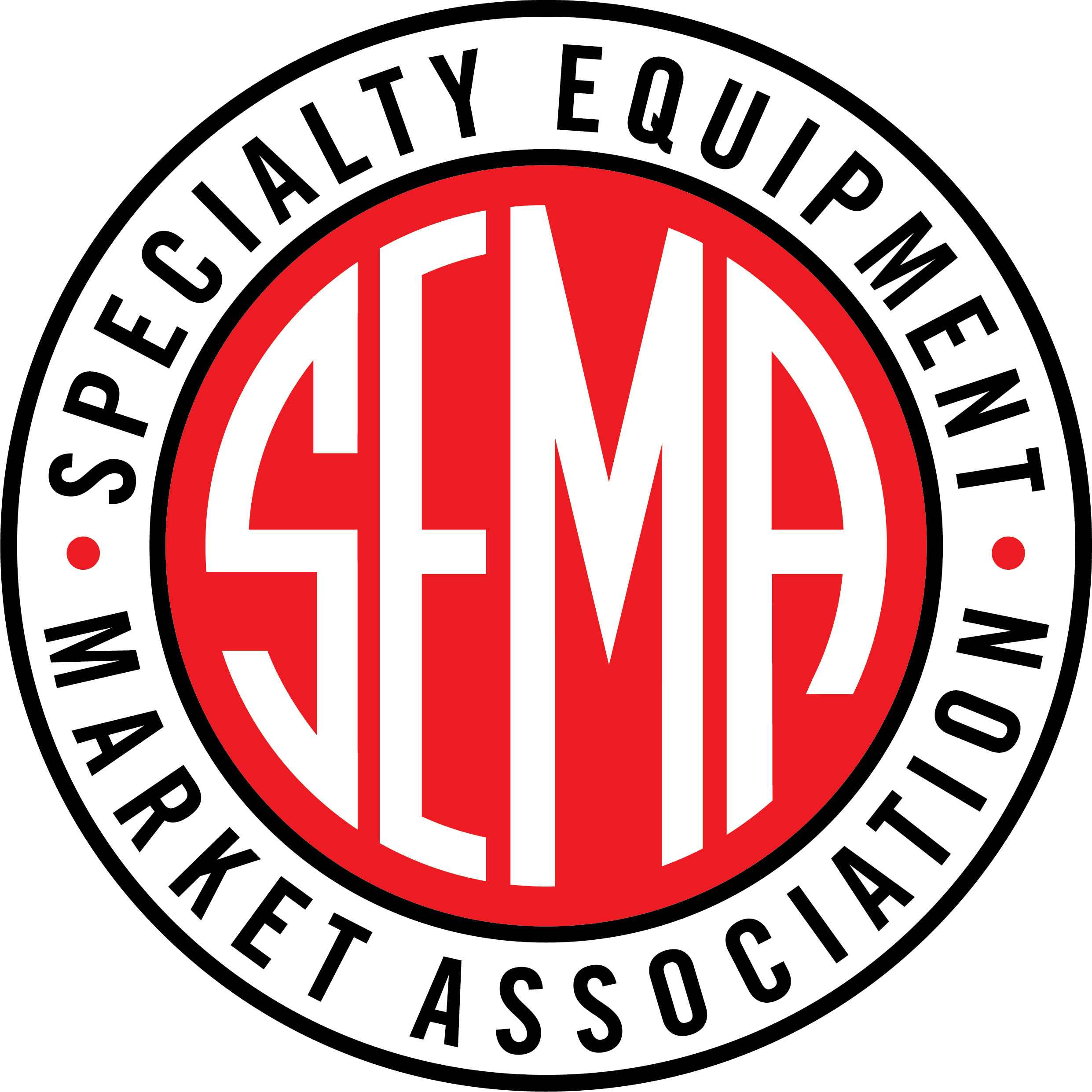SEMA News—July 2013
BUSINESS
By Chad Simon
Car-Care 101
Evolving Trends and Modern Technology Keep Product Manufacturers on Their Toes
| |
Car care encompasses a wide range of surfaces, from paint to wheels and tires. Each offers several material options, such as clear coat vs. matte and chrome vs. aluminum. There are literally hundreds of products specifically designed for each type of surface. To choose the best product for the job, it’s crucial that consumers and professional detailers know the makeup and condition of the surface they’re working on. Big bucks have been spent customizing the vehicles, so products to enhance and maintain their appearance must function without causing damage. To help ease the burden and keep your customers coming back, experts recommend that retailers educate them and stay on top of evolving trends.
New Matte Finishes Create New Challenges
More finish options are available today than ever before, said Ron Fausnight, research and development manager for Houston-based ITW Global Brands—the parent company of several brands that include Rain X and Black Magic. The base coat/clear coat, which was new 20 to 30 years ago, has become the traditional finish. Conversely, consumers with a lower-gloss, matte-type paint should understand that waxing transforms it into a high-gloss finish. A good-quality car wash will work on any finish, but avoid the low-gloss paint areas when waxing and use a detailer to touch it up, Fausnight suggested.
According to Robert Dipede, global business development sales and marketing manager for Los Angeles-based Shining Monkey, wraps and matte-finish paints are all the rage. Plasti dip—a spray-on rubber coating that changes the color of the car—is another surface covering that people are using. But there are few products on the market specifically formulated to clean matte-finish paint, matte vinyls and even printed vinyls.
The matte-finish trend has made a comeback from the old rat-rod days of the ’50s and ’60s, but it has spread to luxury vehicles this time, as inspired by Ken Block’s ’06 Mercedes-Benz CLS, according to Dipede. “It makes the car look more stealth,” he said. “People customize their cars to make them different. That’s part of what the whole matte look is about.”
The look also creates new opportunities for customizers, and new problems for detailers.
“We’ve developed products that help maintain, clean and protect all of those surfaces without causing the matte finish to look shiny or change color,” Dipede said. “It makes the surface look original by leaving an invisible barrier without adding shine. You can’t see the protective barrier, but you can feel it with your hand.”
Over the past 20 years or so, the car-care market has seen a general decline, partially because paint technology has improved drastically, according to Michael Pennington, director of training and consumer relations for Irvine, California-based Meguiar’s. Base-coat/clear-coat technology has slowed the aging process, which is why cars don’t need to be waxed as frequently. However, the market has flourished among enthusiasts.
“Car guys wax their cars on a monthly basis because they want to, not because they have to,” Pennington said. “They have an emotional connection; they take pride in their cars and they want to pamper them all the time because they consider their cars as extensions of themselves. The perception is, ‘I take care of my car; therefore, I take care of myself.’ A small percentage of the market is made up of enthusiasts, but they buy a tremendous amount of products.”
Overall longevity, durability, clearness, increased color options and shine have made paints look more vibrant. Despite their longevity, clear coats tend to scratch easily, but they don’t grind out and oxidize, unlike the early lacquers and enamels. Swirls, scratches and towel marks are now the number-one complaint. Because clear coats are sensitive to abrasion, yesterday’s products don’t necessarily work on today’s finishes, so enthusiasts must always choose products tailored to their finishes.
“We have a variety of products on the shelf designed for the finishes of the ’30s, ’40s, ’50s and ’60s, and we still make them,” Pennington said. “They might work on a new finish, but we have ones that are designed specifically for modern finishes. The abrasives are different and the formulations are different because they’re designed for scratch-sensitive clears.”
As for mattes, Meguiar’s carries products that work but are not specific to the finish, according to RJ de Vera, associate director of public relations and event marketing for Meguiar’s. “People want miracle solutions for matte that just don’t exist,” he said. “Once you get a big scratch on matte, you can’t do anything about it because you change the sheen of the actual clear coat when you use a compound and an abrasive to polish it out. You can get rid of the scratch, but then you’ll have a shiny spot.”
Keeping Up With Modern Finishes
| |
To keep pace with these changes, Shining Monkey anticipates market trends by developing products three to five years out. The problem here, according to Dipede, is getting newly developed products to retail, because retailers tend to react slower to trends.
“We develop products that are growing with the trend, and retailers take a long time to react and get the products to the shelf because they’re so new,” Dipede said. “For example, we have a matte and vinyl cleaner we’re trying to launch in a few of the larger national chains. The retailers are hesitant because they don’t know how popular matte cars have become. They are out there, and there are no products on the market for them, so the problem is getting retailers to listen to what’s happening.”
Limit Confusion
There are hundreds of pre-waxes, cleaners, glazes, polishes and rubbing compounds on the shelf that all say the same thing, and it’s confusing to the consumer, according to Dipede.
“We try to explain to the average guy—because he doesn’t know the difference between a wax, a polish or a glaze—the different uses and how to apply them,” he said. “In our packaging, we tell consumers they don’t need to do three steps on their cars. If they want to, great, but they don’t have to, especially with modern finishes. As long as you have a good maintenance program, you’re using a good soap and you’re not going through no-touch car washes too often, the paint will last 15–20 years without looking weathered or torn.”
Andy Marocco, owner of Route 66 Speed Shop, suggested that manufacturers keep it simple. The company recently developed Rat Wax, which Marocco says is the first product on the market specifically designed to clean and protect rods and custom cars with flat, matte and satin paints.
“Consumers are inundated with decisions,” he said. “They don’t want several different products. They want one product that they can use on everything, including windows, seats and chrome. The key to connecting with consumers is to get out and talk to them and understand what they need. The market tells you where you should be, so it’s important to respond quickly to new trends.”
Right Tool, Right Technique
| |
“When you go to the doctor, he evaluates you and writes a prescription,” Pennington said. “It’s your responsibility to read the directions and follow them. What happens if you just start popping pills randomly? They don’t do the job, or you may die. Think of all the different brands of car care as medicine. If you don’t know what’s wrong with your vehicle, there’s no way you can choose the right products, and if you don’t follow the directions, you’re not going to get good results. The best way to get good results is to understand what you’re working on and where you want to go.”
When choosing the right product for paint, there are five steps consumers should follow: wash, clean, polish, protect and maintain. Every car needs to be washed frequently using quality microfiber towels and clean mitts, because if they don’t remove the dirt, it’s going to bond and get etched into the finish. According to Pennington, the majority of Americans use dishwashing liquid, and it works, but it strips the wax protection off. He compares it to using an all-purpose cleaner on your hands all the time. To stay ahead of the game, use a pH-balanced, non-detergent car wash designed for automotive finishes.
People often wash and wax their cars and consider it detailing, but Pennington believes they’re missing the boat. Surface prep, or cleaning, removes bonded contaminants and defects, including scratches, swirls, stains and fallout that washing can’t remove. Not everybody does this, even though it can easily be performed using a drill-activated dual-action polisher system with specialized microfiber pads.
“This is what makes a car look really good,” he said. “Think of it as exfoliating your skin. A lot of companies make compounds or clay products. Whether the surface is rough and you want to make it as smooth as glass, or you want to get rid of swirl marks, that’s where this is done.”
Polishing creates gloss and is an optional step, comparable to putting lotion on your skin. The next step is protection, similar to applying sunscreen, which slows down the effects of Mother Nature. The disconnect is that most people don’t know how to protect their vehicles, according to Pennington.
“They see swirls, so they wash and wax, which leaves them with protected swirls,” he said. “If you put sunscreen over grease and grime on your hands, you get protected grease and grime. Not to mention that the wax doesn’t work as well and it doesn’t wipe on or off as easily. If you’re evaluating your car for the first time, you need to wash, clay, compound, wax and maintain your car.”
Three to four months later, it’s time to reevaluate. The vehicle’s finish shouldn’t be rough and have swirls, so a wash and wax would be all that’s necessary.
“So you know how to care for your car now,” Pennington said. “You’ve used the right tools and you haven’t put scratches back into it. It’s like cleaning your house once per year or vacuuming every weekend. If it already looks good, you never need to do a deep clean.”
Matte care is slightly different, but always be critical with washing and drying, wax and protection, Pennington suggested. Don’t use cleaners (compounds and clay) or polish, because they are designed to take out swirls and scratches by leveling a little bit of paint. Never use an abrasive, and do all the work by hand. For protection, a non-
abrasive spray wax works best. For maintenance, quick detailers can be used.
Evaluating the finish and choosing the right product is just as important for wheel care. If you choose the wrong wheel cleaner, you can damage a set of wheels. Understand what you bought, the surfaces you’re working on and, more importantly, the types of brakes and suspension components you have, Pennington suggested. When you spray a wheel cleaner, it goes all the way through and hits all the components. For example, if you have chrome wheels with high-performance brakes, you would not use a chrome wheel cleaner because it’s aggressive. You would choose an aluminum wheel cleaner or the weakest and safest product from a pH-balance perspective. Whether you’re a detailer or a consumer, take the safest, least-aggressive method.
Developing Eco-Friendly Solutions
Read the rest of "Car-Care 101" in the July 2013 issue of SEMA News.








